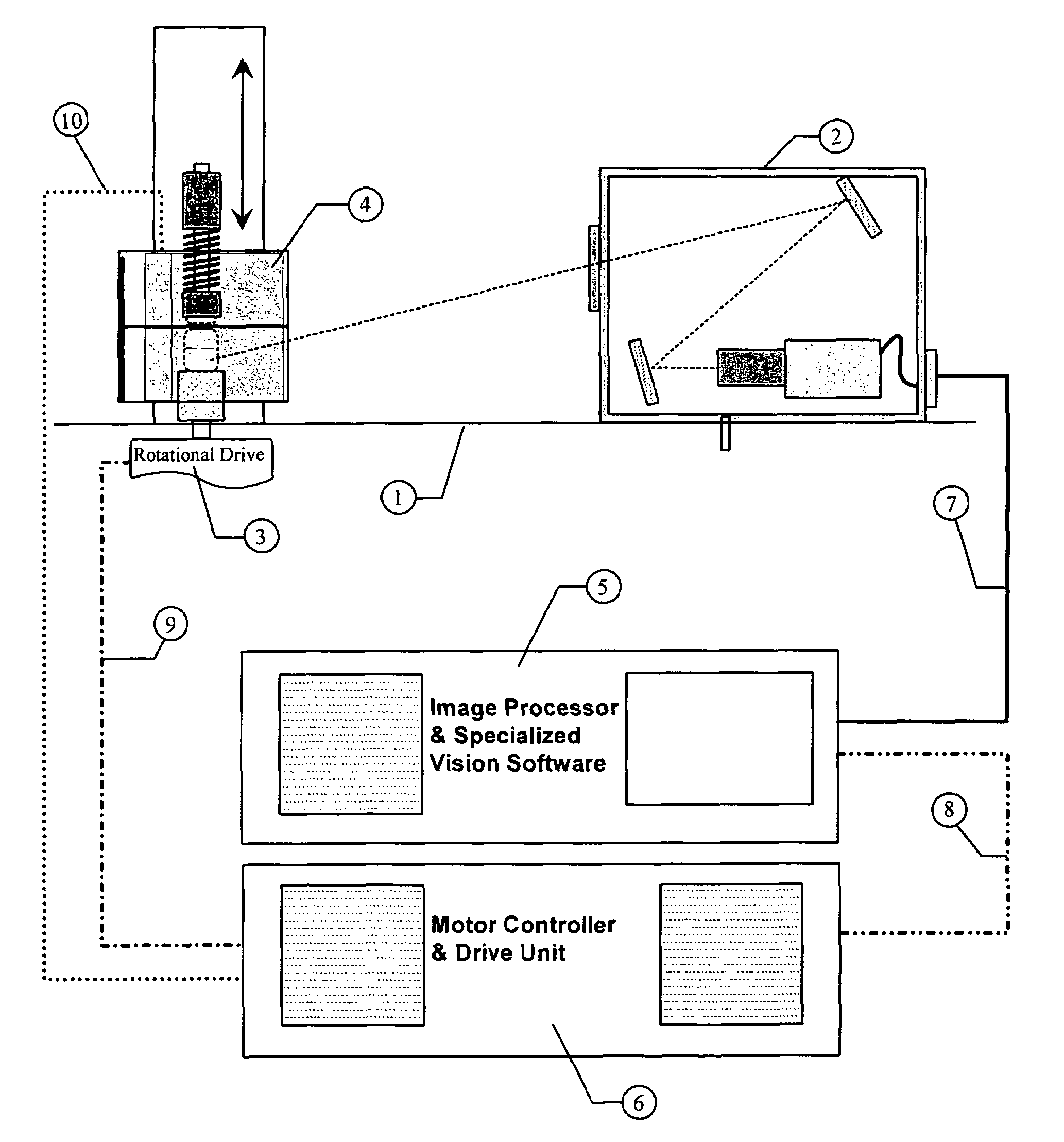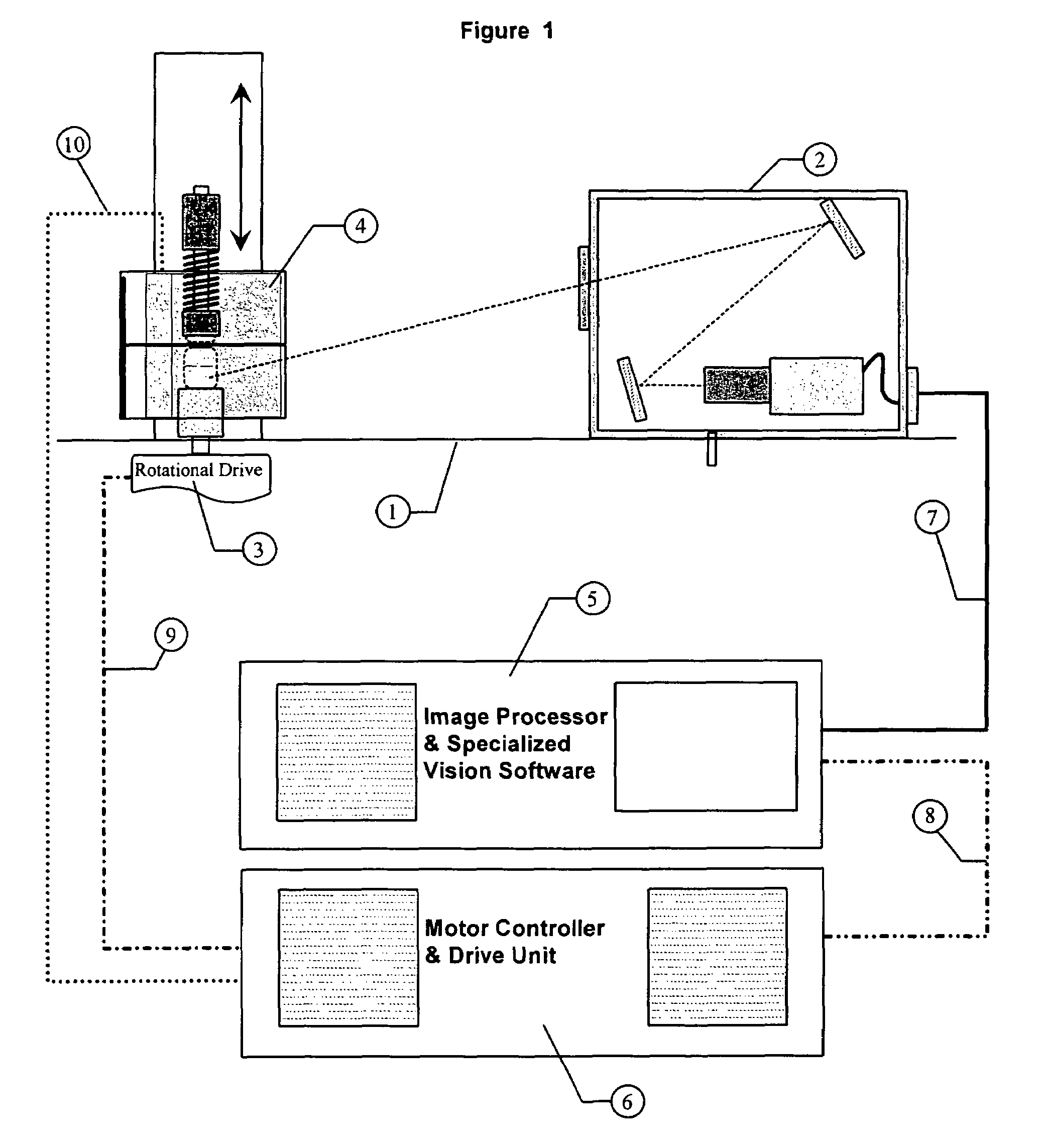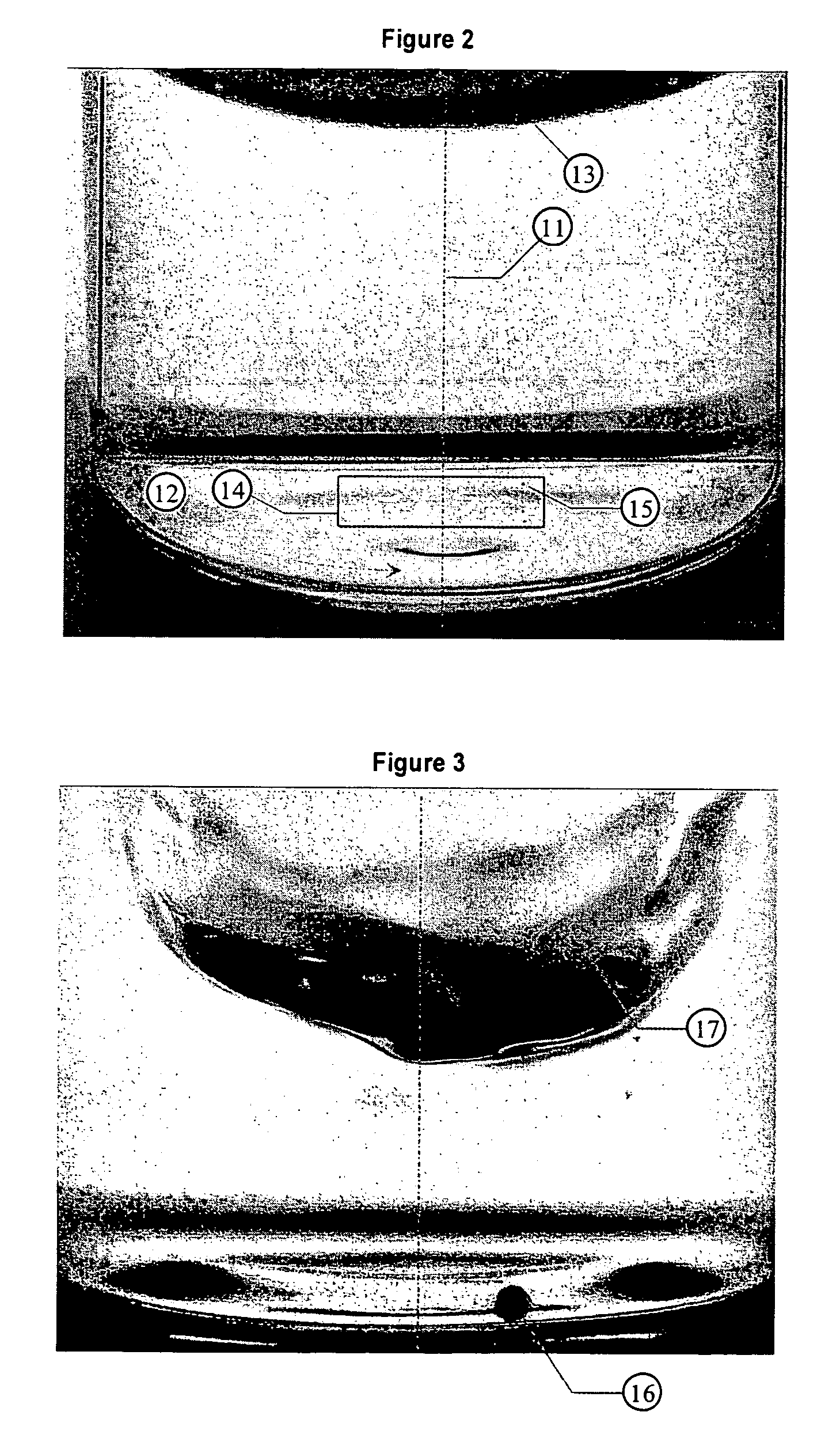Small container fluid dynamics to produce optimized inspection conditions
a fluid dynamics and small container technology, applied in the field of injectable pharmaceutical preparation inspection, can solve the problems of limited sensitivity and the need to interpret the probability of the results obtained, and the future use of the investigator's tool may very well shrink, so as to improve the image characteristics, enhance the effect of contaminating materials with less optical density and reducing the radiant energy of the illumination system
- Summary
- Abstract
- Description
- Claims
- Application Information
AI Technical Summary
Benefits of technology
Problems solved by technology
Method used
Image
Examples
Embodiment Construction
[0040]The invention is a combination of mechanical, electronic, and software components configured in the proper way to produce information that will yield repeatable measurement results. The major components and their relationship to each other are illustrated in FIG. 1. The alignment of components used for image acquisition is very important and must be referenced to level surface (item 1). A machined surface provides a excellent datum for mounting the sensor module (item 2), the rotational drive (item 3) and the illumination module (item 4). Item 2 through 4 are described in detail in the U.S. patent application Ser. No. 10 / 981,801. The sensor module contains the sensor, relay mirrors (if required), and filter elements (if required) and a method to maintain the orientation of the components with respect to each other. The sensor module was designed so that it could be replaced as a whole with a nearly identical module. The physical dimension of the sensor module would be identica...
PUM
| Property | Measurement | Unit |
|---|---|---|
| diameter | aaaaa | aaaaa |
| scan time | aaaaa | aaaaa |
| diameter | aaaaa | aaaaa |
Abstract
Description
Claims
Application Information
 Login to View More
Login to View More - R&D
- Intellectual Property
- Life Sciences
- Materials
- Tech Scout
- Unparalleled Data Quality
- Higher Quality Content
- 60% Fewer Hallucinations
Browse by: Latest US Patents, China's latest patents, Technical Efficacy Thesaurus, Application Domain, Technology Topic, Popular Technical Reports.
© 2025 PatSnap. All rights reserved.Legal|Privacy policy|Modern Slavery Act Transparency Statement|Sitemap|About US| Contact US: help@patsnap.com



